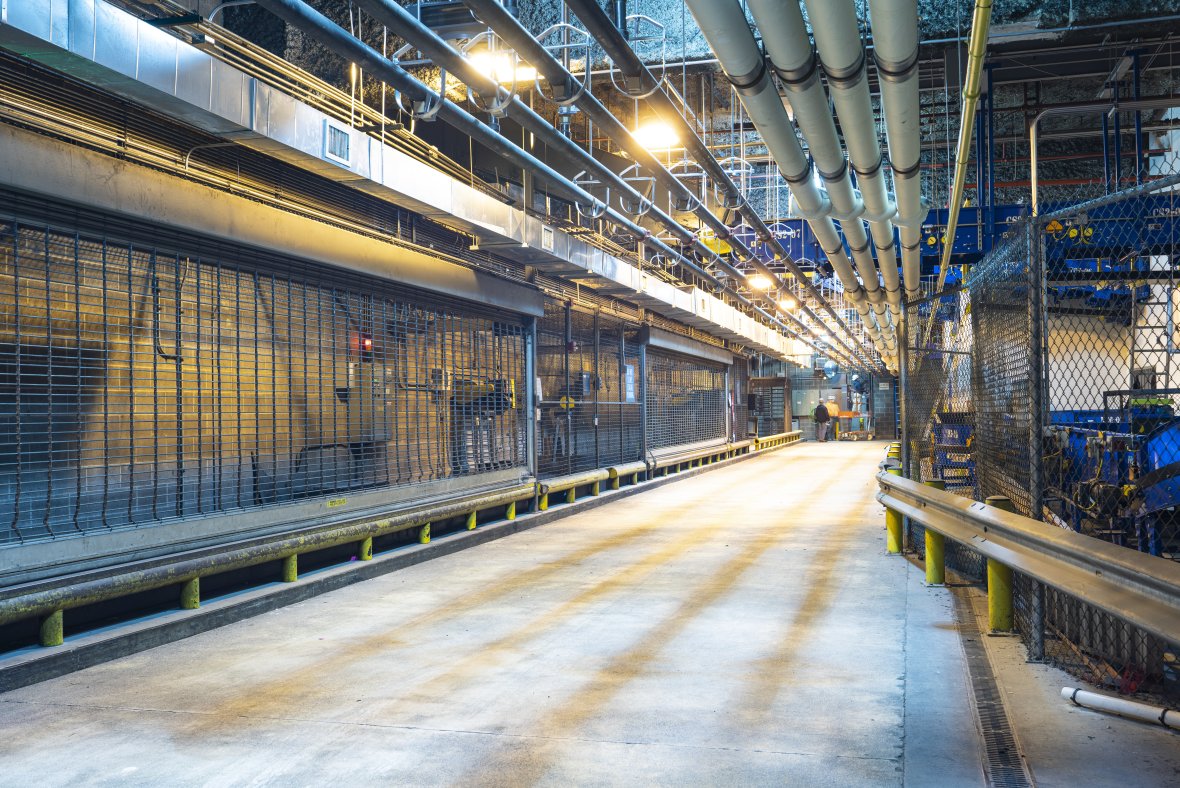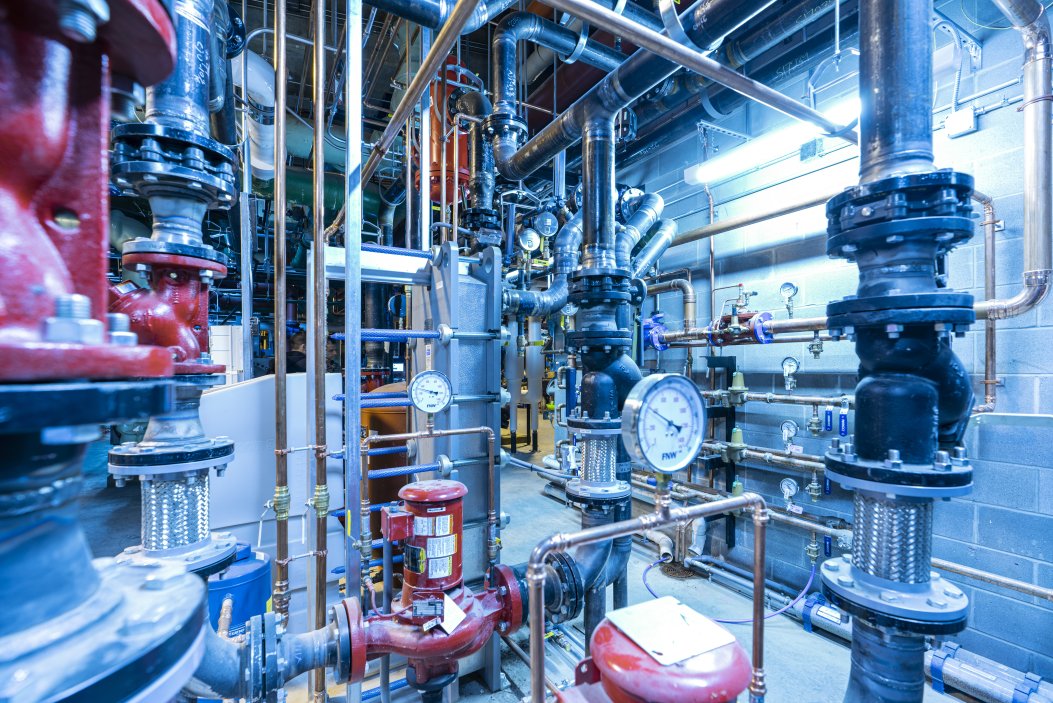This article was originally published by Plumbing Engineer Magazine.

As international travel returns to pre-pandemic levels, the aviation industry faces renewed challenges in addressing climate change. In 2022, the aviation industry was responsible for producing more than 900 million tons of carbon dioxide and are looking for innovative ways to reduce their energy use and decarbonize.
One organization leading the way in aviation is the Louisville Muhammad Ali International Airport (SDF) in Louisville, Ky. As a part of its SDF Next Program — an initiative providing $400 million for improvements to the terminal and airfield in the coming years — SDF is installing the largest geothermal HVAC system of any U.S. airport.
SDF recognizes the major role the aviation industry plays in climate change, which led to the initiation of its SDF Next Program. The program features Sustainability Focus Areas that aim to improve energy efficiency and access to alternative fuel sources. Once complete, the program is targeting a 45% overall energy reduction. CMTA, a Legence company, has been a key partner in helping SDF achieve these ambitious goals.
CMTA has worked with the Louisville Regional Airport Authority (LRAA) for the past seven years. In 2018, CMTA assessed the aging systems and infrastructure throughout the airport to align them with its energy reduction goals. The geothermal HVAC system was the largest project to come out of the assessment.
However, the geothermal system was not the assessment’s initial recommendation and was not included in the original design. A high-performance traditional system was originally selected to minimize downtime and quickly address the facility’s aging infrastructure. Additionally, the challenge of finding space to accommodate a geothermal wellfield of this magnitude prevented geothermal energy from appearing as a realistic option.
The design team soon realized, however, that if it pursued the traditional system, a cooling tower would need to be relocated to make room for future expansion. The difficulty of finding a suitable location that was both cost-effective and accommodated future facility expansion led the team to reconsider other options.
After exploring different systems, the design team introduced the idea of using geothermal energy to address this challenge to the airport authority as it would provide the airport with room for future expansion, resiliency and redundancy. The airport authority was enthusiastic about the opportunity and decided to move forward with the geothermal HVAC system.
Phased Replacement
The geothermal option is a shift from gas to electric and opens opportunities for additional renewable energy sources, such as solar and full-terminal generator backup. Additionally, the geothermal system will use 40% less energy than traditional heating and cooling systems and require less maintenance over the course of system life. Geothermal systems also have a much longer life expectancy than traditional systems — about two to three times longer — and contribute to a more resilient terminal overall.
Not only does the geothermal system align with the airport’s sustainability and carbon reduction efforts, but it also aligns with the Federal Aviation Administration’s Voluntary Airport Low Emissions (VALE) program. Subsequently, the FAA awarded SDF a VALE grant that paid for a large portion of the geothermal wellfield.
The project kicked off in 2021, with construction starting in the spring of 2022. The airport’s geothermal system will heat and cool the 400,000-square-foot Jerry E. Abramson terminal building, with 648 vertical wells drilled 500 feet deep. That’s the equivalent of planting 500 acres of trees!
Although this is often considered a complicated job, the process is relatively simple: 6-inch diameter holes are drilled into the soil, placing a u-bent pipe in each hole where water is pumped into the earth and back up. The earth’s natural temperature cools the water in the summer and heats it in the winter. The water from the geothermal system is then pumped to a central location, where it is distributed to mechanical rooms for heating and cooling throughout the airport terminal.

Using the earth’s temperature as a renewable source saves large amounts of utility costs year-round.
One of the bigger challenges for the project teams was effectively managing an operational jobsite in collaboration with the airport. In addition, the design teams worked together to implement ASHRAE 62.1 and ASHRAE 90.1 to use a waterside economizer and heat recovery chiller.
The installation of the new geothermal system is a phased replacement of the existing hot and chilled water air handling units with geothermal heat pumps. Currently, the 30-year-old Abramson Terminal depends on a 1,200-ton chilled water system and three natural gas-fired boilers. The new heat pumps feature waterside economizer coils for increased energy savings and a seamless phased replacement.
The existing chillers, cooling towers and boilers are being replaced with water-to-water heat pumps and small condensing boilers. Using energy recovery systems to pretreat code-required outside air will also provide SDF with considerable cost savings.
Demand control ventilation is being implemented to control the amount of outside air in the queue to provide the right amount of outside air based on occupant load, as well as bipolar ionization, increased filtration and correct levels of outside air to provide a cleaner environment and increased indoor air quality at the airport.
When complete, the system is estimated to reduce the building’s energy use intensity from 217 to 120 — an annual carbon reduction of 438 metric tons. This is equivalent to removing 539,563 pounds of burned coal emissions from the air annually.
Sustainability Ambassador
The first two phases of the new geothermal HVAC system project at SDF will be completed in spring 2024, with a ribbon-cutting to celebrate this major milestone in the SDF Next Program.
Though having the largest geothermal HVAC system of any airport is a huge accomplishment, it also includes benefits beyond simple energy reduction: a healthier and more comfortable environment for travelers, with more outside air filtered into the terminal; 80% carbon footprint reduction; $340,000 in heating and cooling cost savings annually; less maintenance required over time; and room available for future system expansion to grow with the airport’s needs. The wellfield is sized for a future terminal expansion of 100,000 square feet.
The geothermal system at SDF is playing a crucial role in helping SDF achieve its Energy Sustainability Focus Area. Now, the airport is ready to shift its focus to the areas of air, noise, water and administration (https://bit.ly/47G3lLM). While air refers to SDF’s goal of reducing airport air quality impacts, noise refers to its goal of reducing airport noise impacts on the surrounding community. SDF’s water goal includes reducing airport water quality impacts, and its administrative goal involves creating and enforcing sustainable policies, procedures and plans.
Through its SDF Next Program, SDF has positioned itself to be an ambassador for sustainability measures in the aviation industry and fulfill its mission of “being the best in the country.” As CMTA and LRAA continue to achieve the goals within the Sustainability Focus Areas, the hope is to inspire other airports and larger organizations to set their own goals, assess their systems and act within their own abilities.
“We are thrilled to be at the forefront of the movement to make airports as energy-efficient and sustainable as possible,” says Dan Mann, executive director at Louisville Muhammed Ali International Airport. “We hope to encourage the aviation industry to explore the financial, environmental and community benefits of pursuing sustainable initiatives.”
CMTA and LRAA hope to be resources for anyone looking for a starting point or conversation to get their own plans and goals off the ground. The more we work together, the more we all can achieve for the greater good.
Dave Mayer leads CMTA’s construction administration department. With more than a decade of hands-on experience as a building systems engineer and electrician in the United States Coast Guard, he holds a vast understanding of all aspects of the MEP design and construction process. Mayer’s design experience has given him invaluable insight into dealing with code issues, building assessments and system coordination.
